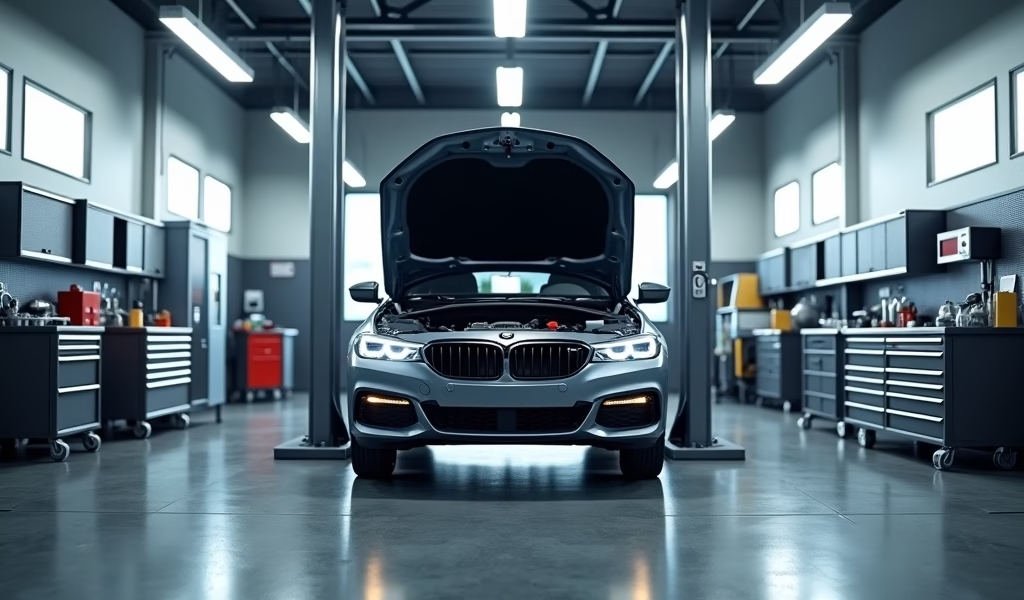Overview
This article outlines five critical vehicle repairs needed after accidents requiring legal representation: structural assessment, brake system restoration, alignment/suspension repairs, electrical system verification, and safety system reset. It emphasizes the dual importance of immediate repairs for both driver safety and creating proper documentation for legal proceedings.
Table of Contents
- Understanding Attorney Accidents: When Legal and Automotive Worlds Collide
- The Importance of Immediate Repairs After an Accident
- Essential Fix #1: Structural Damage Assessment and Repair
- Essential Fix #2: Brake System Inspection and Restoration
- Essential Fix #3: Alignment and Suspension Repairs
- Essential Fix #4: Electrical System Verification
- Essential Fix #5: Airbag and Safety System Reset
- The Critical Post-Repair Safety Check
- Documentation for Legal Purposes: Protecting Your Interests
- Conclusion: Prioritizing Safety After an Attorney Accident
- Frequently Asked Questions
Understanding Attorney Accidents: When Legal and Automotive Worlds Collide
You’ve probably heard the term “attorney accident” tossed around, but what exactly does it mean? In simple terms, an attorney accident refers to any vehicular incident that involves legal representation due to its complexity or the severity of damages. Whether you’ve been in a fender bender or a more serious collision, knowing when to consult a car crash attorney is just as important as understanding which repairs your vehicle desperately needs.
I’ve spent over 20 years under the hood, and I can tell you with certainty: what happens after an accident can be just as critical as the accident itself. Many folks focus solely on the legal aspects – insurance claims, liability questions, and potential compensation – while overlooking the mechanical urgency their vehicle faces.
The aftermath of an attorney accident presents a unique situation where mechanical needs and legal documentation intersect. Getting the right repairs isn’t just about making your car run again; it’s about ensuring your safety and strengthening your legal position. Let’s dive into the five essential fixes your vehicle needs after experiencing an accident severe enough to warrant legal attention.
The Importance of Immediate Repairs After an Accident
When your vehicle has been in an accident that requires attorney involvement, time becomes a precious commodity. Many drivers make the mistake of postponing repairs, thinking minor damage can wait. Let me be clear: delaying necessary repairs after an attorney accident can jeopardize both your safety and your legal case.
First and foremost, hidden damage lurks beneath seemingly minor dents and scrapes. What appears as a small cosmetic issue might actually be compromising your vehicle’s structural integrity or critical systems. According to research from the Insurance Institute for Highway Safety, vehicles with unaddressed collision damage are significantly more likely to experience catastrophic failure in subsequent accidents.
From a legal standpoint, immediate repairs create a clear documentation trail. Your motor vehicle accident lawyers will need comprehensive repair records to establish the extent of damage for your claim. Waiting too long can make it difficult to connect specific damage to the accident in question.
Additionally, driving a compromised vehicle puts you and others at risk. Even if your car seems operational, unseen damage to braking systems, airbag sensors, or structural components could fail at critical moments. Safety should always trump convenience when it comes to post-accident vehicle operation.

Essential Fix #1: Structural Damage Assessment and Repair
The backbone of your vehicle – its frame and structural components – serves as your primary protection in a collision. After an attorney accident, proper structural assessment isn’t optional; it’s essential. Even accidents at modest speeds can compromise your vehicle’s crucial safety cage.
A professional assessment goes far beyond what the naked eye can detect. Advanced tools like laser measuring systems can identify frame misalignments down to the millimeter. These subtle deviations might seem insignificant, but they can dramatically alter how your vehicle handles and how it would perform in a subsequent collision.
Key structural elements that require careful inspection include:
- Frame rails and crumple zones
- Unibody construction points
- A-pillars, B-pillars, and roof supports
- Door frame integrity
- Core engine mount structures
Modern vehicles are designed with specific crumple zones – areas engineered to absorb impact forces. Once these zones have been compromised, they may not function properly in future accidents. Professional repair shops use dedicated frame machines to restore these critical components to manufacturer specifications.
I’ve seen too many cases where drivers fixated on exterior cosmetics while ignoring the invisible structural damage. Remember this: paint and panels can be replaced easily, but compromised structural integrity puts your life at risk. Furthermore, proper documentation of structural repairs provides crucial evidence for your lawyer in car accident proceedings.
Essential Fix #2: Brake System Inspection and Restoration
Your vehicle’s ability to stop effectively can mean the difference between life and death. After an attorney accident, your brake system deserves meticulous attention – even if the collision didn’t directly impact this area. The forces transmitted through your vehicle during impact can affect brake components in ways that aren’t immediately obvious.
I recommend a comprehensive brake system inspection that examines:
- Brake lines for kinks, leaks, or stress fractures
- Master cylinder and brake fluid reservoir integrity
- Brake pad condition and mounting
- Rotor surface for warping or damage
- Caliper alignment and functionality
- ABS sensors and control modules
Even slight bends in brake lines can restrict fluid flow, leading to spongy brakes or increased stopping distances. Similarly, the impact forces may have shifted calipers slightly, causing uneven pad wear or rotor scoring that will worsen over time.
Modern vehicles rely heavily on electronic brake control systems. The delicate sensors that make these systems work can be easily damaged or misaligned in an accident. According to National Highway Traffic Safety Administration data, brake system failures contribute to approximately 22% of mechanical-cause accidents.
Don’t fall for the “if it stops, it’s fine” mentality. Proper brake function involves more than just bringing your vehicle to a halt – it’s about control, consistency, and reliability in emergency situations. After an attorney accident, insist on thorough brake documentation for both safety and legal purposes.
Essential Fix #3: Alignment and Suspension Repairs
Your vehicle’s suspension system is remarkably complex – a network of components working in harmony to provide comfort, handling, and safety. Even low-speed accidents can throw this delicate system out of balance, creating issues that worsen over time. After an attorney accident, suspension and alignment repairs aren’t just about ride comfort; they’re fundamental safety concerns.
Impact forces travel through your vehicle in unpredictable ways. A front-end collision, for example, can compress suspension components, bend control arms, or damage steering mechanisms. Similarly, a side impact might seem localized but can twist your frame enough to throw wheel alignment completely off specifications.
Critical suspension components that require thorough post-accident inspection include:
- Struts and shock absorbers
- Control arms and bushings
- Ball joints and tie rod ends
- Steering rack components
- Sway bars and links
- Wheel bearings
The telltale signs of suspension damage aren’t always dramatic. You might notice your vehicle pulling slightly to one side, unusual tire wear patterns developing, or steering that doesn’t feel quite as precise as before. These subtle changes indicate potentially serious issues that can affect vehicle control in emergency situations.
Proper alignment isn’t just about preserving tire life – it ensures your vehicle tracks straight during heavy braking. In panic stop situations, misalignment can cause dangerous pulling to one side. For both your safety and legal documentation, insist on four-wheel alignment measurements and correction as part of your post-accident repairs.

Essential Fix #4: Electrical System Verification
Modern vehicles are rolling computers, with dozens of electronic control modules managing everything from engine performance to safety systems. After an attorney accident, electrical damage often flies under the radar – invisible to the eye but potentially catastrophic in function. Many drivers underestimate just how vulnerable these systems are to collision forces.
The jarring impact of a collision can disconnect sensors, damage wiring harnesses, or even crack circuit boards inside control modules. These issues might not trigger immediate warning lights but can cause intermittent problems that are difficult to diagnose later. When it comes to safety systems, these hidden electrical faults can be particularly dangerous.
A thorough electrical system verification should include:
- Computer diagnostic scanning of all control modules
- Inspection of wiring harnesses in impact areas
- Testing of all safety sensors (airbag, ABS, stability control)
- Verification of lighting systems functionality
- Battery and charging system assessment
I’ve encountered numerous cases where dashboard warning lights appeared weeks after an accident due to wiring that gradually worked loose or connectors that corroded after exposure to the elements. These delayed symptoms can complicate both repairs and legal proceedings.
Don’t settle for a basic “check engine light” scan. Insist on comprehensive diagnostic testing that checks all vehicle systems. Modern scanning equipment can identify modules that have recorded impact events or anomalies, providing valuable documentation for your attorney while ensuring all electronic systems function as designed for your safety.
Essential Fix #5: Airbag and Safety System Reset
The final essential fix after an attorney accident might not involve physical repair at all, but it’s arguably one of the most critical: properly resetting and verifying your vehicle’s safety systems. These sophisticated networks of sensors, computers, and mechanical components must function flawlessly in milliseconds when needed.
Many drivers don’t realize that even if airbags didn’t deploy during their accident, the system may have “armed” or partially activated. Modern vehicles record crash data and may enter a self-protection mode after detecting impact forces. Without proper resetting, these systems might not function correctly in a subsequent collision.
A comprehensive safety system reset should include:
- Airbag control module inspection and reset
- Seat belt pretensioner verification
- Impact and rollover sensor testing
- Occupant classification system calibration
- Supplemental restraint system diagnostic clearing
This isn’t a job for generic code readers or DIY enthusiasts. Proper safety system reset requires manufacturer-specific equipment and procedures. Attempting to clear these systems without proper tools can leave them in an undefined state where they appear functional but may not deploy correctly when needed.
Beyond airbags, other critical safety systems like automatic emergency braking, lane departure warning, and adaptive cruise control require recalibration after accidents. These advanced driver assistance systems rely on precisely positioned sensors that may have shifted during impact. According to IIHS research, properly functioning driver assistance technologies can reduce accident rates by up to 40% – but only when correctly calibrated.
The Critical Post-Repair Safety Check
After completing all five essential fixes following an attorney accident, one crucial step remains: the post-repair safety check. This isn’t simply a quick once-over but a methodical verification that all systems function properly as an integrated whole. Think of it as your vehicle’s final exam before returning to daily service.
A proper post-repair safety check should include:
- Road test evaluating acceleration, braking, and handling
- Noise, vibration, and harshness assessment
- Electronic systems verification under operating conditions
- Fluid level and pressure checks after system operation
- Secondary inspection of repair areas after stress testing
I always recommend having this final check performed by someone other than the primary repair technician. Fresh eyes can catch details that might be overlooked by someone who’s been deeply involved in the repair process. Consider it a form of quality control that provides additional peace of mind.
Document this final safety check thoroughly. The report should include before-and-after measurements, test results, and a comprehensive list of all systems verified. This documentation serves dual purposes: it confirms your vehicle’s roadworthiness and provides valuable evidence for your legal proceedings.
Documentation for Legal Purposes: Protecting Your Interests
Throughout this article, I’ve emphasized the importance of thorough documentation – not just for your safety, but for legal protection as well. After an attorney accident, proper repair documentation can significantly impact your case outcome.
Effective repair documentation should include:
- Detailed initial damage assessment with photos
- Itemized repair estimates and final invoices
- Parts replacement records with OEM specifications
- Before/after measurements for structural repairs
- Diagnostic scan reports showing all codes
- Calibration certificates for safety systems
Request digital copies of all documentation, including photographs of damaged components that were replaced. These visual records can be invaluable in demonstrating the extent of damage to insurance adjusters or in court proceedings if necessary.
Beyond documentation, maintain communication with your repair facility about any post-repair concerns. If you notice unusual behavior in your vehicle – even minor issues like new noises or slight handling changes – document these observations immediately. These details may become relevant to both your safety and your legal case.
Conclusion: Prioritizing Safety After an Attorney Accident
An attorney accident represents a critical juncture where mechanical integrity and legal considerations intersect. The five essential fixes we’ve discussed – structural assessment, brake system restoration, alignment and suspension repairs, electrical verification, and safety system reset – form the foundation of a comprehensive recovery plan for your vehicle.
Remember that proper repairs serve dual purposes: they restore your vehicle’s safety and functionality while also providing crucial documentation for legal proceedings. Cutting corners on these essential fixes jeopardizes both your physical safety and your legal position.
As a mechanical professional who’s witnessed the consequences of inadequate post-accident repairs, I urge you to advocate for thorough, documented work on your vehicle. The immediate cost of comprehensive repairs pales in comparison to the potential long-term consequences of overlooked damage.
Your vehicle protects what matters most – you and your passengers. After an attorney accident, give it the care and attention it deserves by insisting on these five essential fixes performed by qualified professionals.
If you found this guide helpful, please share it with friends and family who might benefit from this knowledge. The more informed we all are about proper post-accident repairs, the safer our roads become for everyone. Have you experienced an attorney accident? Share your repair journey in the comments – your story might help someone else navigate this challenging situation.
Frequently Asked Questions
What exactly is an “attorney accident”?
An attorney accident refers to any vehicle collision serious enough to warrant legal representation. These typically involve significant damage, injury, or liability questions that require professional legal guidance.
How soon after an accident should I get these essential repairs completed?
You should have your vehicle professionally assessed within 72 hours of the accident, even if damage seems minor. Immediate attention ensures safety and creates proper documentation for your legal case.
Will my insurance cover all these essential repairs after an accident?
Insurance coverage depends on your policy details and the accident circumstances. Your attorney can help ensure the insurance company provides appropriate coverage for necessary safety repairs.
Can I drive my car before getting these repairs if it seems fine?
Even if your vehicle seems operational, hidden damage could compromise safety systems or structural integrity. Have it professionally inspected before driving to ensure it’s truly safe.
How do I find a qualified repair facility for post-accident repairs?
Look for shops with I-CAR Gold Class certification and manufacturer-specific training for your vehicle make. Your attorney may also have recommendations for facilities that provide thorough documentation.

